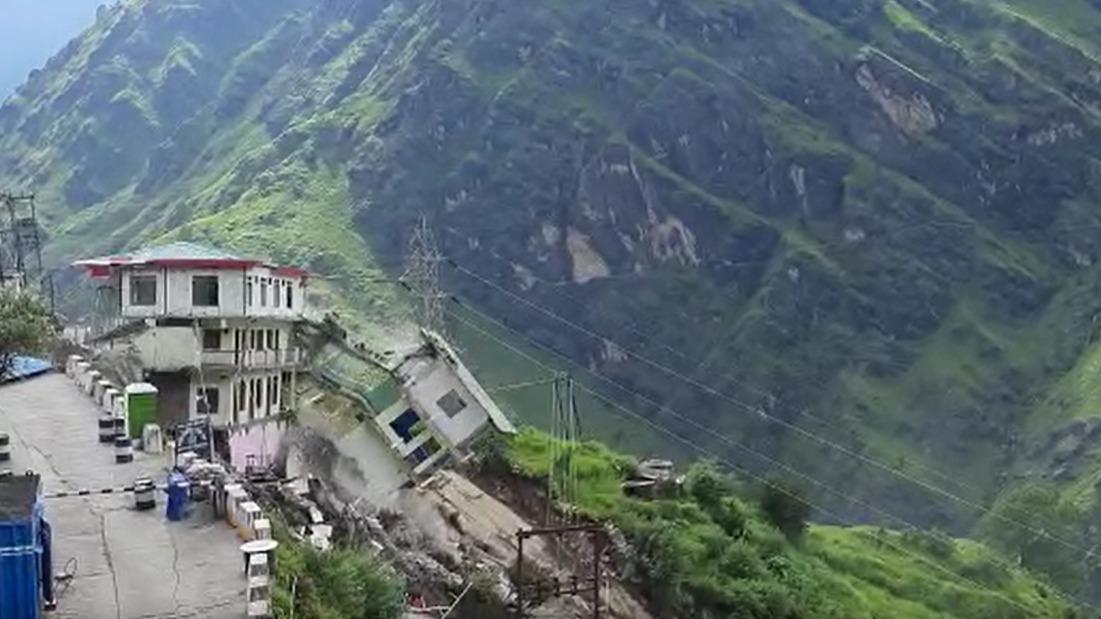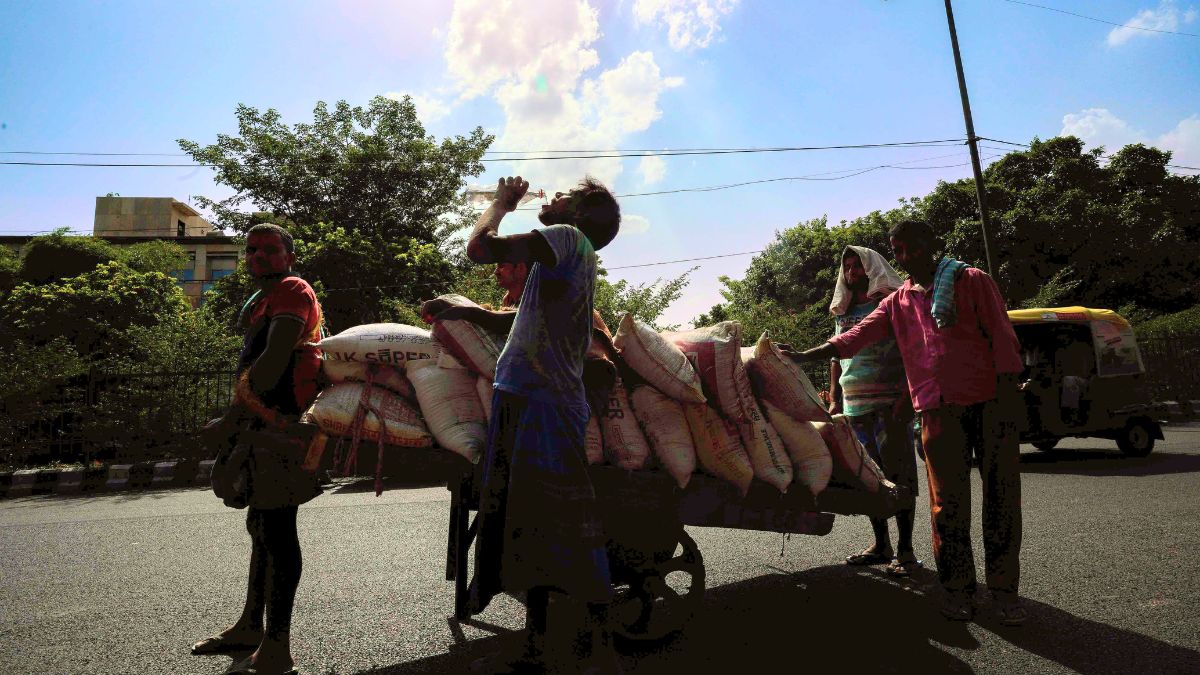Impact of Climate Change on Landslides in Uttarakhand
Climate change footprint on Uttarakhand’s rainfall patterns is accelerating landslides in the region
By Editorial Team / Sep 30, 2024

Climate change is hitting the world’s most densely populated region with acute intensity and frequency. Extreme heatwaves in India, along with changing patterns of the southwest monsoon, are increasing the vulnerability of its population and governance structures. Governments at central, state and local levels are increasingly recognizing the significance of preparedness, resilience, and planning for the impacts of climate change. According to a study, climate change in Uttarakhand will increasingly force people to abandon farming at high altitudes and move to the plains over the next 30 years.
Uttarakhand’s battle with climate change has become fiercer, with the state witnessing abnormality during every season. 2024 began with a warmer than average and snowless winter season, followed by record breaking heat during the summer season. So far, Monsoon rains have been on the surplus side but uneven spatial distribution of rains have been posing challenges for the state’s ecosystem. Extreme weather events have become a new normal for the state during the season, impacting the state economy. To discuss the Impact of rising temperatures on Uttarakhand’s ecosystem and economy a workshop was organised at the Uttaranchal Press Club in Dehradun. The half day conference discussed solutions and pathways for ensuring security, health, livelihoods and growth as Uttarakhand’s changing weather patterns challenge its policymakers and society.
Uttarakhand has witnessed another year of variable Monsoon rains this season. While each incident could not be classified into a natural disaster like a cloudburst, these extreme weather events have been sending strong indications of climate change.
So far, Uttarakhand has recorded 1267.9 mm of rainfall against the normal of 1156.6, which is an excess of 10%. According to rainfall standards set by the country’s nodal weather agency, India Meteorological Department, rainfall is considered to be a normal category with an error of +/-19% of the long-period average rainfall. Dr. Ashwini Ranade, a climate scientist from the Centre for Cryosphere and Climate Change Studies, noted that “even a slight rise in temperatures in the Himalayan region can significantly destabilize the ecosystem,” further emphasizing the urgent need for climate mitigation efforts. Dr. Ranade's concern stems from the fact that a one-degree temperature increase globally results in accelerated glacial melt in the Himalayas. Currently, glaciers are receding by 10-20 meters annually, and this trend could push the region toward a future where rain-fed systems dominate, exacerbating the drought-like conditions.
However, like past many years, maximum contribution continued to be in the form of extreme weather events. The uneven distribution of rainfall continues to haunt the state. According to latest Monsoon rain figures, Bageshwar district has recorded over three times of its average rainfall, making it rainfall excess to the tune of 223%. This was followed by Chamoli district, which also had excess rainfall by 75%. Simultaneously, Pauri Garhwal district has been battling with a large rainfall deficiency of 38%.
Climate change impact and increase in landslides in Uttarakhand
Increasing frequency and intensity of extreme weather events can be directly linked with the spike in the average temperatures influenced by the impacts of climate change. In fact, places in the higher elevations, which experienced sparse rainfall are now witnessing bountiful rains.
Reportedly, the state has seen over 1500 incidents of landslides this year, triggered by very heavy to extremely heavy rains. According to geologists, geomorphological conditions of high mountain areas are very sensitive to heavy spells of rain. Rudraprayag district in Uttarakhand which has highest landslide density in India, also has the highest exposure to total population, working population, literacy and number of houses.
Between 1988 and 2023, Uttarakhand recorded 12,319 landslides, according to data from the Indian Space Research Organisation (ISRO). The frequency has accelerated over the past few years:
Landslides can be initiated in slopes already on the verge of movement by rainfall, snowmelt, changes in water level, stream erosion, and changes in groundwater levels, earthquakes, volcanic activity, disturbance by human activities, or any combination of these factors (USGS). Landslides are triggered usually when the intensity of rainfall increases to 200mm in 24 hours.
Soil Type
While landslides are induced by rainfall, there is another factor of soil. The permeability of the soil cover leads to water infiltration to the ground and if the underlying soil cover is not permeable to water infiltration that may create water pressure that leads to sliding of the upper soil layer. Hilly areas with rivers lead to increased vulnerability to landslides. Unfavourable building practices, improper slope alteration, unplanned clearance of vegetation, and excessive bench terracing in disaster-prone areas all contribute to landslide intensification.
Process Coupling Among Landslides, Glaciers, and Rivers
According to a report, climate change has a direct link with an increase in landslides in high mountains, which can lead to other incidents. Landslides can interact with river processes by forming short- or long-lived dams in valleys. Water impounded behind these dams poses significant flood hazards for downstream populations and infrastructure. Landslides can also alter the sediment budget of rivers and steep mountain torrents. Because sediment supply is an important control on debris flow magnitude and frequency, both slowly and rapidly moving mass movements can change debris flow hazards over many years.
Dynamic interactions among landslides and glacial and river processes in high mountains include:(i)outburst floods from glacier- and moraine-dammed lakes that have formed in response to recent glacier thinning and retreat;(ii)slope failures in rock, ice, or moraines that impact glacial lakes, causing out-burst floods;(iii)damming of rivers by landslides, resulting in potentially unstable dams that may fail within hours, days, months, or years(iv)deposition of landslide debris in channels of rivers or torrents, altering debris flow magnitude and frequency
Impact on Agriculture and Local Communities
Uttarakhand's agricultural sector has been severely impacted by erratic rainfall and landslides. As Dr. Rajendra Singh Negi, a professor at B Garhwal University, points out, “Changing rainfall patterns and frequent landslides are wreaking havoc on hill agriculture, causing soil erosion and significantly reducing soil health.” He further explains that farmers are struggling to adapt to this shifting climate, with monsoon rains arriving either too early or too late, and the intensity of downpours washing away the topsoil essential for cultivation.
Adding to the environmental stress is the rise in pine tree encroachment in forests. Dr. Vinod Kumar Bhatt of the Ingenious Research and Development Foundation in Dehradun highlighted the issue, saying, “Pine trees exacerbate water runoff due to their oily leaves, preventing soil absorption and contributing to both forest fires and landslides.” These fires, caused by dry forest conditions, have become an additional threat during Uttarakhand’s hotter, drier summers, further destabilising the land.
The socioeconomic impact of these changes has been dire. Rural communities, which depend heavily on subsistence farming, are facing increasing food insecurity as their crops fail. Meanwhile, the increased frequency of natural disasters has displaced many families, forcing them to abandon their homes and livelihoods in search of safer ground.
Need for Monitoring, Early Warning and Alert System
It is crucial to establish a robust monitoring, early warning, and alert system for potential disaster risks in the region, ensuring that people in vulnerable areas are promptly informed through reliable, scientifically validated forecasting models provided by the responsible nodal agencies and authorities.
The National Disaster Management Authority (NDMA) has outlined various steps for mitigation and adaptation in Uttarakhand.
- Robust monitoring of the glaciers and connected water bodies could be handy to provide early warning to the downstream community.
- The occurrence of rock avalanche zones in the Himalayan terrain needs to be identified. Monitoring large cracks in mountainous areas is required for assessing a similar type of failure in the future.
- The warning system needs to be integrated with the sirens or hooters and the workers need to be trained in emergency evacuation plans. A system of SaathiRescue (something akin to the Army’s buddy system) needs to be incorporated, where each worker will have a ‘saathi’and the safety of the ‘saathi’ needs to be ensured by each other. Incorporating a public address (PA) system to inform the locals or visitors and other people who do not immediately understand the hooter/sirens may be considered. Over time the public must be fully sensitised.
- Community involvement in the design and implementation of early warning is essential.
- There is insufficient assessment and study of the impact of seismic activities on the glacier bodies and this must be initiated.
- More research is needed on the probable impact of global warming and extreme weather events on the glaciers which leads to hazards in the glacial region.
- It is learnt that there are insufficient constellations of Indian Space Research Organisation (ISRO) satellites, in an inclined path to capture the initiation of such an event as a rockfall in a glaciated area in the Himalayas.
As Uttarakhand faces a future defined by climate change, its people are struggling to adapt to a rapidly evolving environment. The spike in landslides, coupled with erratic rainfall patterns, continues to threaten both lives and livelihoods. Urgent action, through better monitoring, research, and community involvement, is essential to mitigate the damage and prevent further disaster.
Climate Change Uttarakhand Landslides Rainfall Patterns

